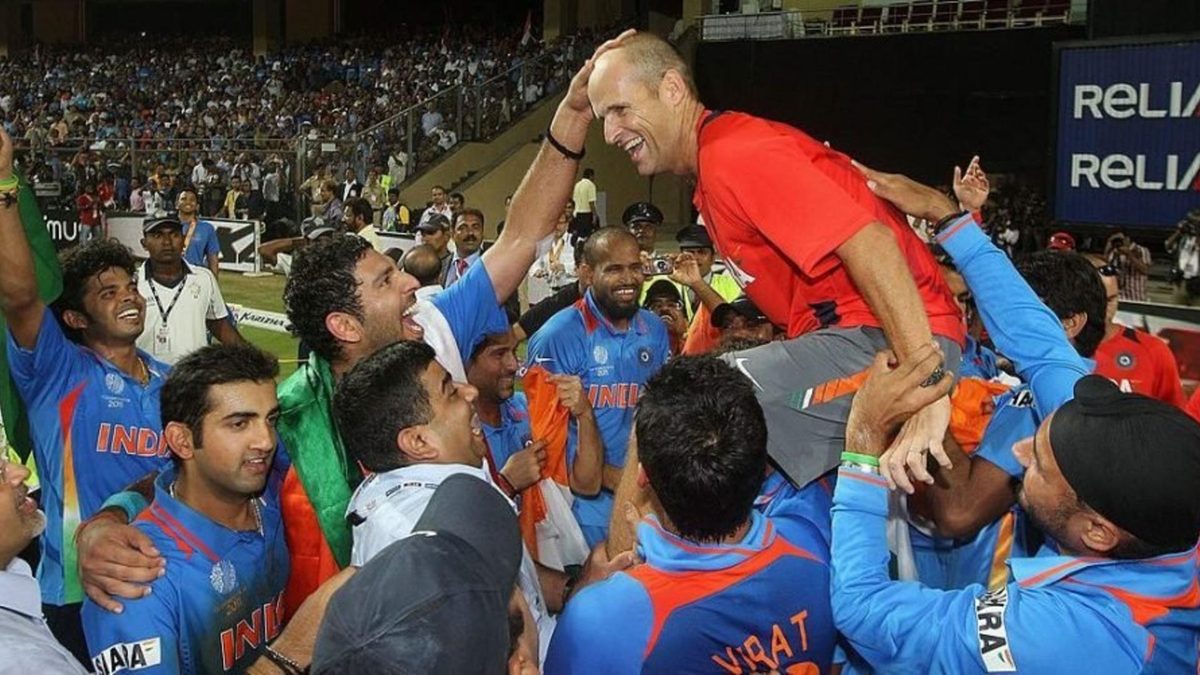
“I like the idea of a foreign coach, because they bring a fresh perspective”
The role of the coach is endlessly debated in cricket. In the 2017 edition, Wisden asked several leading coaches to discuss their approaches to the job.
Micky Stewart
Towards the end of my ten years as Surrey captain I could see cricket was changing. The commercial side of the game was getting bigger, and winning trophies was the priority. County captains had always run the show, on and off the field, but I could see that the increased demand for success was going to require someone akin to a football manager to help bear the load.
I was aware of the opposition within the game, particularly as it conjured up the structure of a professional football club. Even so, Surrey invited me to be their first cricket manager in 1979, and seven years later I was asked to do the job for England – mind you, I didn’t accept it until the TCCB agreed to the title of team manager. Their preference was for assistant manager, again because it had less of a football connotation.
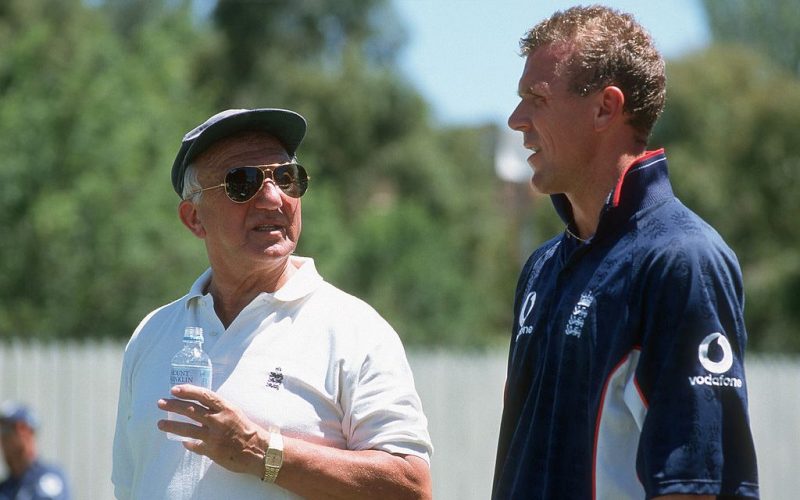 Micky Stewart with son Alec during the 1998/99 Ashes series in Australia
Micky Stewart with son Alec during the 1998/99 Ashes series in Australia
I was lucky that the England side contained talented cricketers, but as a unit they were sadly lacking. In 1986, they lost at home to India and, for the first time, New Zealand. A team including Gower, Botham, Lamb, Edmonds, Emburey and Dilley should not have. Mike Gatting – the captain – and I emphasised this to the players prior to the 1986/87 tour to Australia, and they responded magnificently.
All that was 30 years ago, and it gives me great satisfaction to know that the position I started has been retained – though things have changed a bit, too. When I took over, my non-playing staff numbered two: Lawrie Brown, our experienced physiotherapist, and Peter Lush, the tour manager. Today, it’s around 15!
Micky Stewart was England manager between 1986 and 1992.
Gary Kirsten
I don’t think the cricketing fraternity takes professional coaching seriously enough. We continue to say the captain is more important than the coach, but that’s short-sighted. It requires a highly skilled individual to run a modern international team across three formats. Effectively, you are the CEO of a business. You’re looking after contracting, recruitment, the entire coaching structure, man-management, creating the right environment, scheduling, rotating players across formats, checking facilities, looking after relationships with all stakeholders of the team… the list goes on! There might be a player who calls you in the middle of the night to say: “I need to get home. My wife hasn’t seen me for three months.”
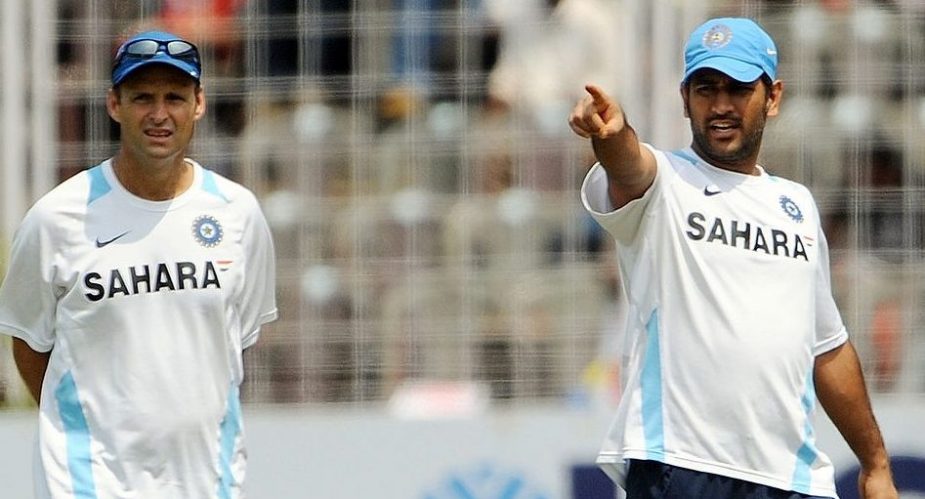 MS Dhoni‘s India achieved Test supremacy and World Cup success during Gary Kirsten’s tenure
MS Dhoni‘s India achieved Test supremacy and World Cup success during Gary Kirsten’s tenure
When I was with India, we did a lot of research into how Indians respond to types of leadership. Generally speaking, they are a flair-orientated people who like to do things in a more spontaneous manner. So, for instance, we brought in optional practice sessions and removed fines for being late: we knew, if the culture was right, the players would feel responsible to their team-mates. That said, my South African instinct for structure and organisation could also blend nicely with India’s free-spirited nature.
As South Africa coach, I considered going the other way, encouraging flair and instinct, and giving the players more chance to make their own decisions. We tried to introduce more flexibility. It wasn’t always popular, because South Africans like a little more structure. I like the idea of a foreign coach, because they bring a fresh perspective, and I warmed to the role in India. There is a lot of hype around Indian cricket but, when it came to the nuts and bolts of coaching, I was left to get on with it.
I wasn’t part of the greater political agenda, and rarely had to speak to the media: I did only two press conferences during the 2011 World Cup. Throughout, we never spoke about winning – there was enough of that around us as it was. Instead we highlighted an image from a Nike advert, which showed the people walking hand in hand with the players, and crossing a line, like the end of a marathon. It showed this was not about the burden of millions of fans on our shoulders: it was a journey with them.
Gary Kirsten coached India from December 2007 until after the World Cup win in April 2011. He coached South Africa for two years from June 2011.
Phil Simmons
As the Zimbabwe coach on my first visit to the National Academy in Harare in 2004, I didn’t allow anyone to practise with their shirt untucked. I’ve since realised those things are not important. Now I’m trying to discern what Player A needs to do differently from Player B for the team to be successful. It’s about how you practise, not how you dress. When I joined Ireland in 2007 they had just started playing regular international cricket. I had to create a culture of professional practice – and be quite strict. Once the players became wise to the demands, I could back off and become more of a facilitator, because these things were done instinctively.
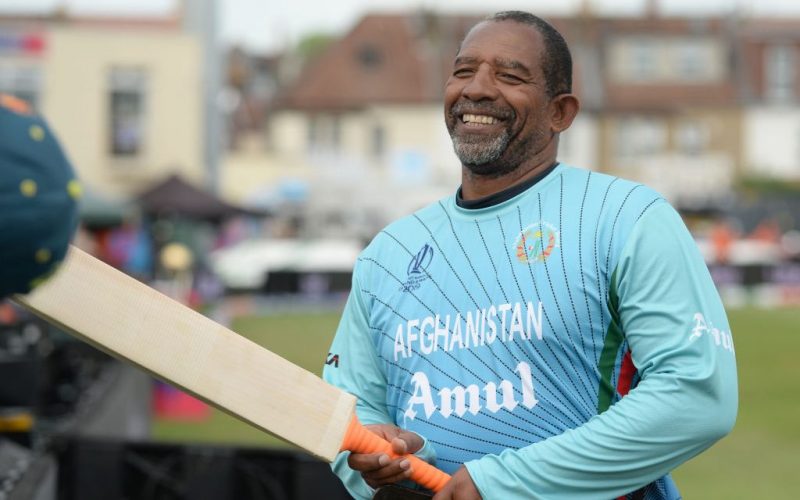 Simmons was at the helm when West Indies lifted their second T20 WC title in 2016
Simmons was at the helm when West Indies lifted their second T20 WC title in 2016
I remember Bob Woolmer talking to me about going on tour: “You have to get a feel for the culture. You can’t sit in a hotel room and then go out and play.” That was the attitude I took to being a foreign coach in Ireland. I was out and about, watching club cricket and talking to their members. Because I made myself seen, people would come up to me without hesitation. That’s how I established a connection with Irish grassroots. In the West Indies, it’s a challenge to teach the skills required for Test cricket. From a young Caribbean player’s perspective, you can play in two or three global Twenty20 leagues and be financially secure. But we can’t make excuses for our Test performance by saying Twenty20 is our natural game. Look at Australia’s David Warner: he was a Twenty20 player who has become one of Test cricket’s best batsmen. The transition is possible.
Phil Simmons has coached Zimbabwe, Ireland, Afghanistan and West Indies.
John Buchanan
When I met the Australian team in 1999, I told them that I wanted to go against convention, that I wanted to coach them as people rather than just cricketers, that I saw us as a family unit. And that it was all about improvement, regardless of results. I put it in terms of a journey to Everest. I wanted to link the present with the past, so I talked about Australia’s 1948 Invincibles. Both Steve Waugh and I were adamant about the symbolic importance of the Baggy Green. The Invincibles had been remembered for something special they had achieved for Australian cricket; I told the team that, by the time we disbanded, we should have left our own imprint.
Players and coaches can become too caught up in the game, insulated from the real world. A young coach who has been in a cricket environment for 15 or 20 years needs to spend time out of it to develop life skills that will help with coaching a set of individuals. I introduced education sessions in which the Australian players were required to talk about something they were passionate about other than cricket. There was everything from fly-fishing to wrestling to poetry. I took the players on a trip to an albatross rookery in Dunedin. It was all aimed at showing there was life outside the dressing-room.
I started using data analysis with Queensland in 1994, and eventually introduced it to the Australian team. Importantly, Waugh had seen me using it with Queensland when we played against his New South Wales side, setting up a game plan in a way no other team were doing. It was harder to convince other seniors. Shane Warne thought all the data and team meetings made the game complicated. What Shane didn’t understand was how skilled he was. That was probably true of Glenn McGrath as well.
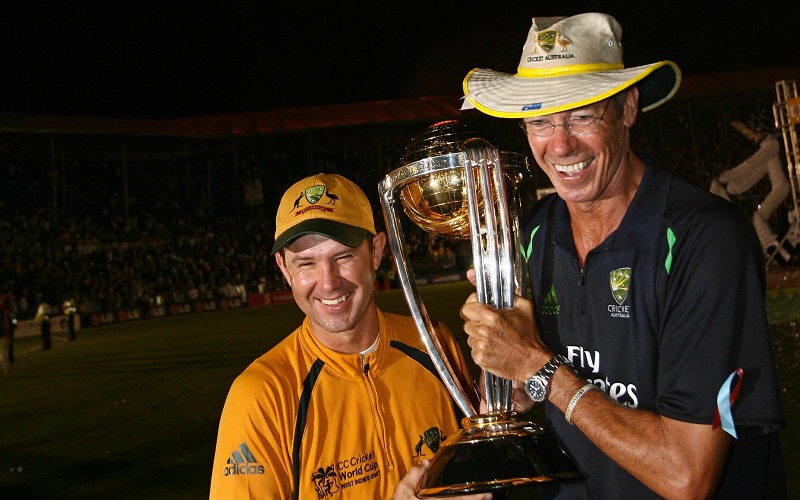 Buchanan was at the helm for two World Cup-winning campaigns
Buchanan was at the helm for two World Cup-winning campaigns
Both had the capacity to retain so much knowledge and experience in their own mental filing systems, and to use it to their advantage during a match. So they couldn’t see the point of all this information. But few players I coached and met possessed their powers of recall. That’s one of the things that made Warne and McGrath great players.
The big challenge for coaches today is balancing three formats. It used to be that you learned the long game and adapted those skills to the short format. These days, coaches and players are learning their trade in Twenty20, which means the 50-over game has become the transitional format to Test cricket. That’s a dynamic with which coaches are constantly grappling.
John Buchanan was coach of Australia from 1999 until 2007; they won his first 15 Tests in charge, and two World Cups. He has also coached Queensland and Middlesex.
John Wright
In some ways I’m in Ian Chappell’s camp: coaches should be responsible for getting players to the ground. The more in the background you are, the better. You lead from behind. For a genius like Virender Sehwag, the key was to give him absolute freedom. The only technical aspect was making sure he kept his head still. On the morning of a match there were just two things I asked Viru: how was his mum’s back (she had a chronic condition), and how was he going to play today. He’d reply: “Play straight and watch the ball.” The biggest harm I could do was to get in his way – so long as he was playing within the confines of the team’s objective.
Perhaps I’m old-fashioned, but I still think a player’s best coaching tool is his peer group. As a young Derbyshire opener, I learned more speaking to Sunil Gavaskar at Somerset or Geoff Boycott at Yorkshire than I did from any coach. Similarly, I wanted the young Indian players to ask Sachin Tendulkar or Rahul Dravid about batting. It was much more powerful coming from them. I hardly did any batting coaching with India.
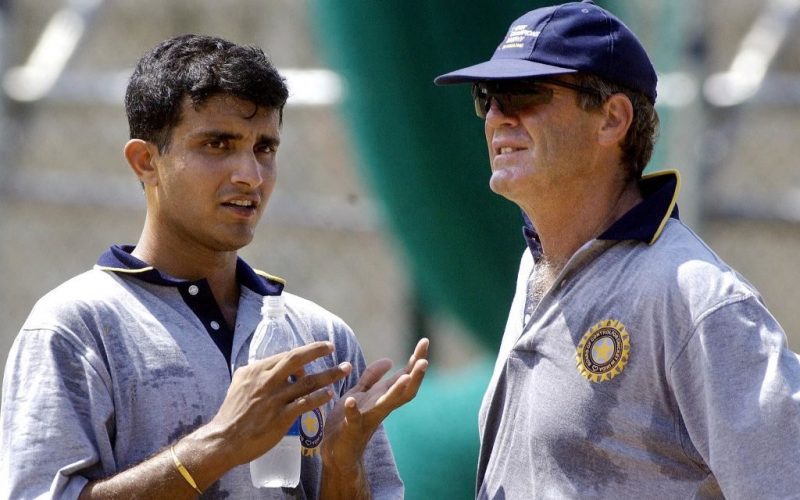 John Wright and a young captain in Sourav Ganguly propelled India’s upward march in the early 2000s
John Wright and a young captain in Sourav Ganguly propelled India’s upward march in the early 2000s
When I started with them, young players would ask: “Do you think I should have a net, sir?” We tried to break down every piece of seniority: everyone was encouraged to have their opinion. Sourav Ganguly, the captain, would invite young players to drink tea in his room. That way we felt more like a family A coach can’t make excuses for bad results: talking about a five-year plan is like a batsman moaning about the wicket. I hardly looked beyond the present.
I recall exchanging a look with Javed Miandad, my opposite number, before a Test series in Pakistan, as if to say: “Whoever loses will get the sack.” Sure enough, Javed lost his job. That’s just the way it is – in fact, it’s part of the thrill. Besides, it’s just a game. “There may be a bit of a pressure on us,” I used to tell the boys, “but no one particularly cares in China.”
John Wright coached India between 2000 and 2005, and New Zealand from 2010 for nearly two years.
Graham Ford
To have been an international cricketer has to be an advantage for a coach, but I was lucky to work with great players in my early days. At Natal, I had senior guys with brilliant cricketing brains, such as Malcolm Marshall and Clive Rice. Malcolm once told me: “Any fool can castigate a player for a poor performance. What it’s really about is finding a way to improve him quietly and in small steps.” After Natal I was assistant, then head coach, of South Africa when still in my thirties. An advantage of not having played at international level is that I am hungry to learn, and happy to be involved.
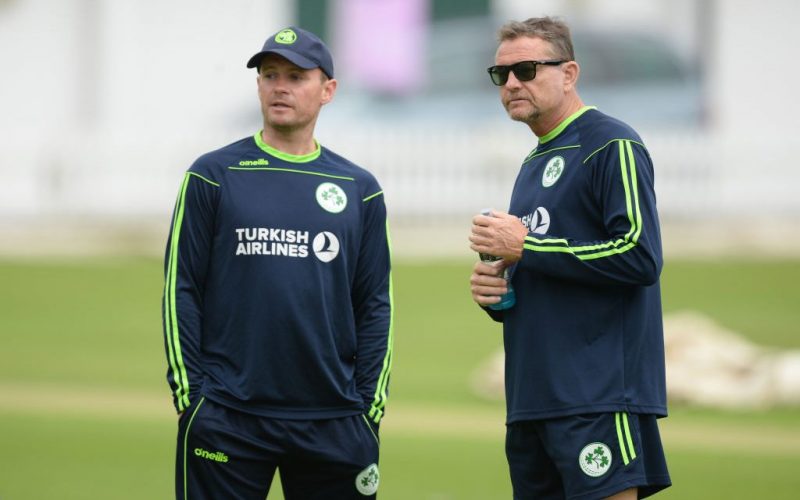 Graham Ford (right) and William Porterfield in conversation before Ireland’s historic Test against England at Lord’s in July 2019
Graham Ford (right) and William Porterfield in conversation before Ireland’s historic Test against England at Lord’s in July 2019
A lot of coaching is about questioning the players and getting their feedback, and one of the huge challenges for a foreign coach in Sri Lanka is the language barrier with younger members of the team. Your seniors are particularly important: they can be your ear on the training ground and help pass on messages. Previously my go-to guys were Mahela Jayawardene and Kumar Sangakkara, which made it easy.
Angelo Mathews has been outstanding in taking on that role. There can be too much coaching, too many messages. You have to allow for individual flair. In Sri Lanka there is a tradition of coaches who don’t have a lot of official badges, but encourage emerging talents to play in their own unique way. Combined with a diet of soft-ball cricket, this has produced some wonderful, freak players. At the same time, a coach should never forget the basics for a batsman or a bowler: get your head and eyes into the right position at the crucial moment.
Graham Ford has had two stints with Sri Lanka, one with South Africa, and also coached Kent and Surrey.
John Bracewell
A rugby or football player has the game of his life, but his team loses and he feels rubbish. A cricketer scores a hundred, but the team loses and, generally, he feels OK. That’s because cricket is an individualistic team sport. Being a cricket coach is a social experiment: you are managing private individuals, team players, givers, takers. Rugby doesn’t tolerate that. As the All Blacks’ motto goes: “No dickheads”. You’re with us or you’re out. Cricket tolerates difference – it has to. That’s why I love it so much.
Bob Woolmer and John Buchanan were two passionate – but polar-opposite – coaches who influenced me. Bob was focused on the improvement of technique through practice, and was extraordinarily innovative. I once went to his old club in Cape Town and found nets with gutters down the side. “Oh, I invented that,” he said. “That way I can gather the balls from one spot.” It made things easier, but it was slightly nuts! John was focused on the improvement of a team through man-management.
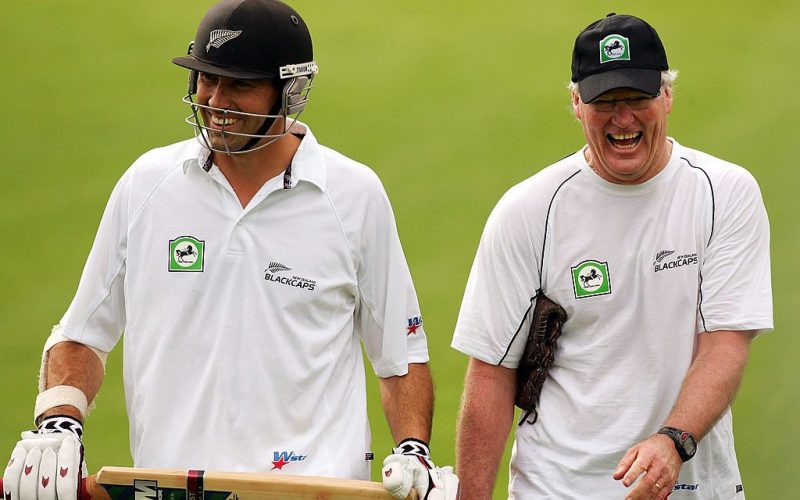 John Bracewell (right) coached New Zealand from 2003 to 2008
John Bracewell (right) coached New Zealand from 2003 to 2008
He came to talk to us in New Zealand once, and told us about the first day he handed out analysis sheets to his Queensland players: Matthew Hayden loved it, Andrew Symonds was a little confused, Allan Border threw his in the bin. John knew his players would react differently, but it didn’t faze him. I’ve never been averse to trying something new that seems a bit crazy. When I was New Zealand coach, one of my big concerns was that, with so many staff and so much data, players had stopped thinking for themselves and communicating with one another. So we looked at a system of peer appraisals used in Australian Rules, where the players would fill in an assessment of the team’s performance at the end of a day’s play. We made some mistakes along the way – it took too long and it wasn’t suited to Test cricket – but I make no apologies for that. Somebody has to get the ball rolling. As a coach you’ve got to be self-assured and unafraid of failure.
The Ireland job has been very enjoyable because it’s a case of back to the future. It’s a bit like New Zealand in the 1980s. A lack of facilities means the players practise at their clubs, and the coach goes with them, so I’ll book a net with Kevin O’Brien at Railway Union CC. Ireland players have a massive affiliation with their local club. It’s earthy, based around families and communities, and makes for self-sufficient cricketers. In terms of teaching the skills of cricket, I have one overriding philosophy: coach the player using his technique, not a technique.
John Bracewell coached New Zealand for five years from November 2003, and Ireland from April 2015 to December 2017. He has had two spells at Gloucestershire.








